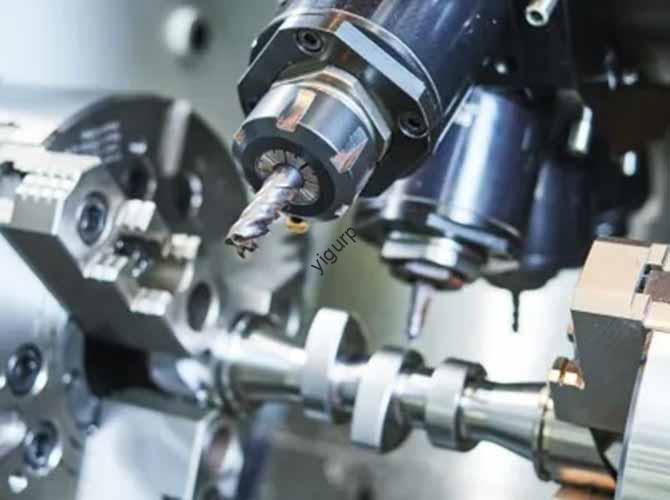Когда дело доходит до CNC aluminum machining, even small adjustments to parameters can mean the difference between a flawless part and a wasted workpiece. Whether you’re a seasoned operator or a factory manager looking to optimize production, understanding how to fine-tune key parameters is critical. This guide breaks down the core CNC aluminum processing parameters with actionable data, сравнения, и практические советы по решению общих проблем.
1. Core CNC Aluminum Processing Parameters: Определение & Optimal Ranges
The four most influential parameters—Скорость шпинделя, глубина разрезания, скорость корма, ивыбор инструмента—directly impact machining efficiency, поверхностная отделка, and tool life. Below is a clear breakdown of each, with industry-proven ranges for aluminum alloys (НАПРИМЕР., 6061, 7075):
| Параметр | Определение | Common Range for Aluminum | Key Impact Factor |
|---|---|---|---|
| Скорость шпинделя | Rotational speed of the tool (measured in RPM) | 3,000–12000 об / мин | Machine spindle type (BT30/BT40/BT50) & tool material |
| Глубина разрезания (DOC) | Thickness of material removed per pass | 0.5–5 мм | Workpiece tolerance & tool rigidity |
| Скорость корма | Distance the tool moves per minute (measured in mm/min) | 1,000–3,000 mm/min | Скорость резки & aluminum alloy type |
| Материал инструмента | Material of the cutting tool | Карбид > Высокоскоростная сталь | Износостойкость & machining efficiency |
2. How to Set Spindle Speed: Avoid Tool Wear & Poor Finish
The spindle speed determines how fast the tool cuts through aluminum—but “faster” doesn’t always mean “better.”
Ключевые соображения:
- Machine Spindle Limitations: A BT30 spindle (common in small CNC machines) typically maxes out at 10,000 Rpm, while a BT50 spindle (for heavy-duty machining) may cap at 6,000 Rpm. Exceeding these limits risks spindle damage.
- Tool Material Impact: Карбид инструментов (the most popular for aluminum) handle higher speeds (8,000–12000 об / мин) than high-speed steel (HSS) инструменты (3,000–6,000 RPM).
Пример: Для 6061 aluminum part using a carbide end mill and BT40 spindle, set the speed to 8,500 Rpm. This balances efficiency and tool life—going to 12,000 RPM would cut cycle time by 20% but reduce tool life by 35%.
3. Глубина разрезания (DOC): Balance Efficiency & Tool Load
Why does DOC matter? A too-deep cut strains the tool, causing vibration and rough surfaces; a too-shallow cut wastes time.
Step-by-Step DOC Selection:
- Check the workpiece’s required thickness: If you need to remove 10 mm of material, split it into 2–3 passes (НАПРИМЕР., 5 mm → 3 mm → 2 мм) instead of one 10 mm pass.
- Match DOC to tool size: А 10 mm diameter end mill can handle a 5 mm DOC, но 3 mm diameter end mill should max out at 1.5 mm DOC to avoid breaking.
- Test with a scrap piece: Before machining the final part, test the DOC on a small aluminum scrap to check for vibration.
4. Скорость корма: The Link Between Speed & Качество поверхности
Feed rate is like the “pace” of the tool—too fast, and the part deforms; Слишком медленно, and costs rise.
Common Feed Rate Mistakes & Исправляет:
| Ошибка | Symptom | Исправить |
|---|---|---|
| Feeding too fast (над 3,000 мм/мин) | Workpiece bends or has burrs | Lower to 2,500–2,800 mm/min |
| Feeding too slow (под 1,000 мм/мин) | Long cycle times; tool overheats | Increase to 1,200–1,500 mm/min |
| Ignoring alloy type | Uneven surface finish | Use 1,000–1,800 mm/min for 7075 (Сильнее) против. 1,800–3,000 mm/min for 6061 (более мягкий) |
5. Tool Selection for CNC Aluminum Machining: Carbide vs. HSS
Aluminum’s tendency to “stick” to tools makes tool choice critical. Let’s compare the two most common options:
| Особенность | Карбид инструментов | Высокоскоростная сталь (HSS) Инструменты |
|---|---|---|
| Износостойкость | Отличный (lasts 3–5x longer than HSS) | Бедный (needs frequent sharpening) |
| Speed Compatibility | Высокий (до 12,000 Rpm) | Низкий (максимум 6,000 Rpm) |
| Расходы | Higher upfront ($20–$50 per tool) | Lower upfront ($5–$15 per tool) |
| Лучше всего для | Масштабная продукция; плотные допуски | Small-batch jobs; simple cuts |
Для чаевого: Choose carbide tools with alarge rake angle (15°–20°). This reduces cutting force and prevents aluminum from adhering to the tool’s edge.
6. Yigu Technology’s Perspective on CNC Aluminum Processing
В Yigu Technology, Мы поддерживали 500+ manufacturers in optimizing CNC aluminum machining. Из нашего опыта, 70% of quality issues stem from mismatched parameters—e.g., using a high feed rate with a shallow DOC. We recommend pairing ourYigu CNC spindle units (BT30/BT40 models) с карбидными инструментами: our BT40 spindle’s stable 10,000 RPM output, combined with a 15° rake angle carbide tool, cuts cycle time by 25% while keeping surface roughness (Раствор) ниже 0.8 мкм. For small-batch users, our HSS tool kits (pre-sharpened for aluminum) reduce setup time by 40%.
Часто задаваемые вопросы: Common Questions About CNC Aluminum Processing Parameters
- Q.: Can I use the same parameters for 6061 и 7075 алюминий?А: Нет. 7075 сложнее, so lower spindle speeds (6,000–8000 об / мин) и скорости корма (1,000–1,800 мм/мин) are needed, по сравнению с 6061 (8,000–12000 об / мин; 1,800–3,000 mm/min).
- Q.: How do I fix vibration caused by deep cuts?А: Reduce the depth of cut by 30%, increase spindle speed by 10%, or use a tool with a larger diameter (НАПРИМЕР., switch from 6 мм до 10 MM End Mill) for more rigidity.
- Q.: When should I choose HSS tools over carbide?А: HSS is better for small-batch jobs (меньше, чем 50 части) or simple cuts (НАПРИМЕР., бурение отверстий), as it’s cheaper upfront. Для масштабного производства, carbide’s longer life saves money.
